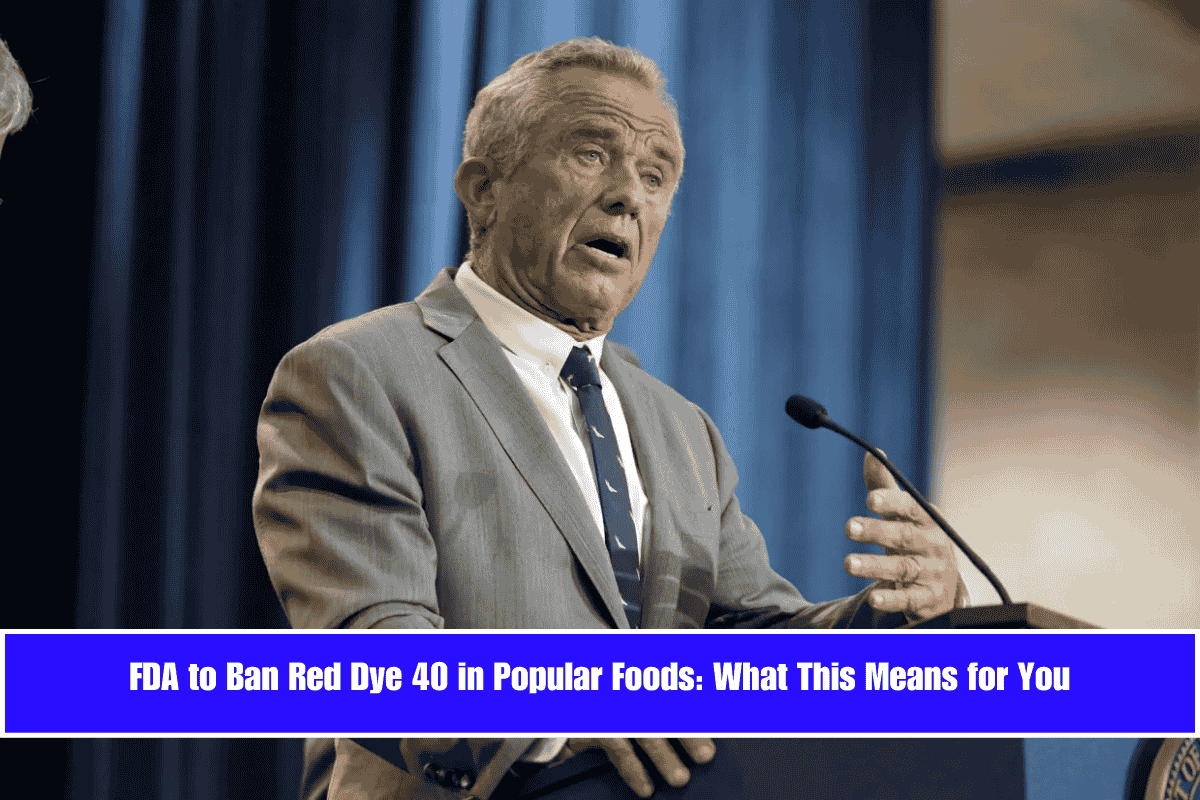In a big move for food safety, the U.S. Food and Drug Administration (FDA) has announced that it will be phasing out a commonly used artificial food dye, Red Dye 40. This decision has come after years of studies and growing concern about the effects of synthetic dyes on health, especially in children.
Red Dye 40 has been a regular ingredient in many popular snacks and drinks like Flamin’ Hot Cheetos, Mountain Dew Baja Blast, cereals, sports drinks, and chips. But now, this bright red coloring agent will no longer be allowed.
Why Red Dye 40 is Being Banned
FDA Commissioner Marty Makary explained that this decision is a step towards making food safer, especially for children. He mentioned that kids in America have been exposed to many synthetic chemicals through food over the years. A study from the medical journal The Lancet even linked artificial dyes to higher levels of hyperactivity in children.
Makary said removing these dyes won’t solve every health problem, but it’s a start. “Taking petroleum-based food dyes out of the food supply is one important step,” he said during a press event.
Robert F. Kennedy Jr. Pushes for Cleaner Food
Health Secretary Robert F. Kennedy Jr. has also been very active in this effort. He recently met with top food company executives to stress the need to remove artificial dyes from their products. Brands like General Mills, Kraft Heinz, PepsiCo, and Kellogg were all part of this meeting.
Kennedy pointed out products like Froot Loops cereal as examples that contain heavy amounts of artificial coloring. Companies will now have to work on changing their recipes, which could take time and effort.
Past Changes and Challenges
This isn’t the first time food companies have had to rethink their ingredients. In 2015, Kraft Heinz removed artificial dyes from its mac and cheese after pressure from customers. They used natural colors in the U.S. version, like they already did in Europe.
However, some companies have gone back to artificial dyes after removing them. General Mills took out artificial colors from Trix cereal but brought them back in 2017 after customers complained about the taste and appearance.
Other Dyes Already Banned
Before this recent action, the FDA had already banned another red dye—Red No. 3—because it caused cancer in lab animals. Even though it was allowed for many years, new research led to its removal.
More Changes at the FDA and Health Department
These dye bans are just part of a larger plan by Kennedy and the current administration to make big changes in health policy. Around 10,000 employees from various health departments are also losing their jobs due to government restructuring. Offices handling HIV prevention and healthcare equality are facing budget cuts.
The FDA is also working hard to handle the ongoing egg shortage caused by the bird flu virus. They’ve recalled several kitchen items recently to ensure consumer safety.
The decision to ban Red Dye 40 shows that the U.S. government is starting to take stronger steps towards protecting public health. Although removing one dye won’t fix all health problems, it’s a clear move in the right direction. Companies will need to adjust their recipes, and consumers might see changes in the colors of their favorite foods. Still, this step aims to ensure a safer, healthier future—especially for children.


















Leave a Reply